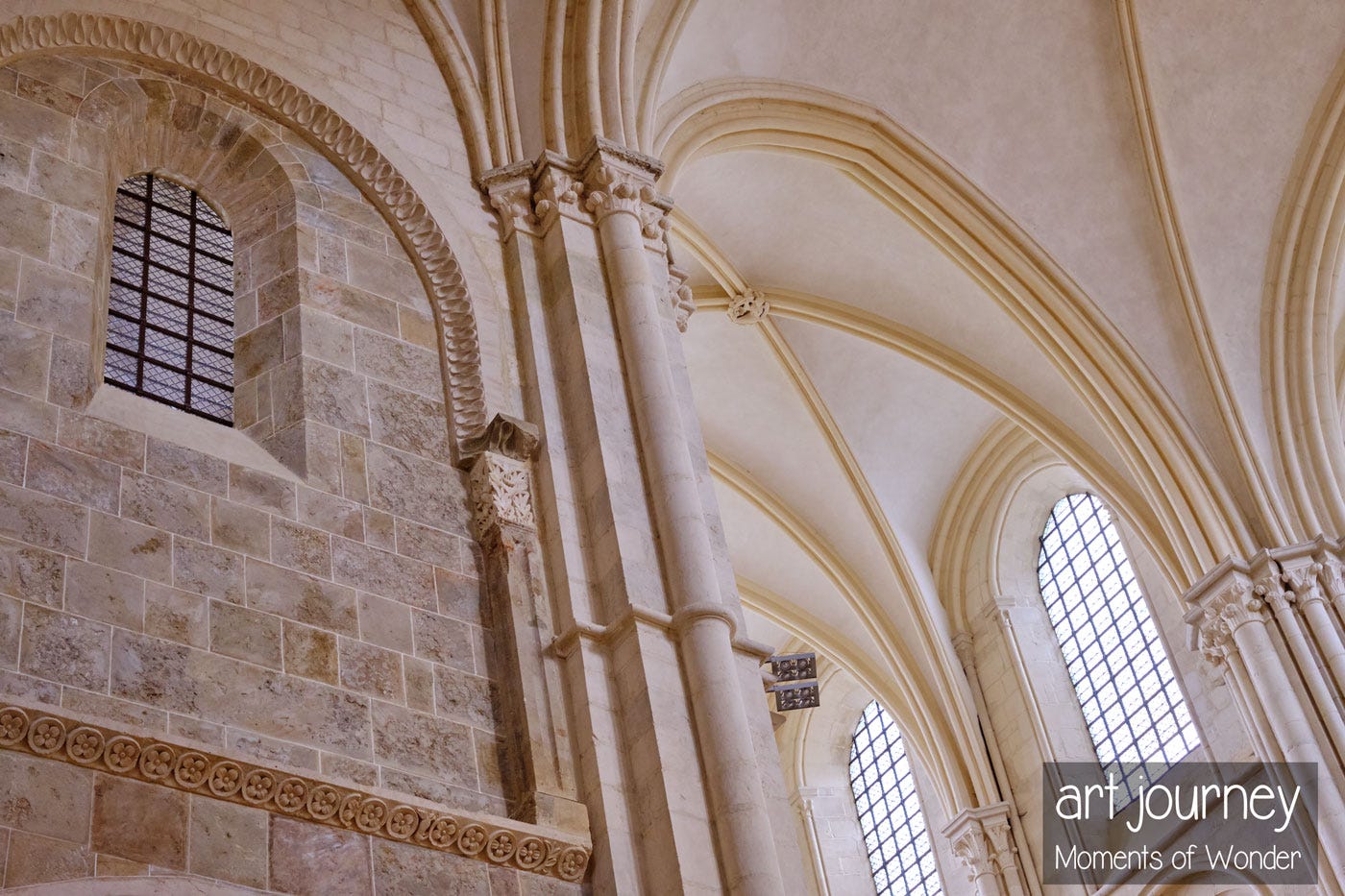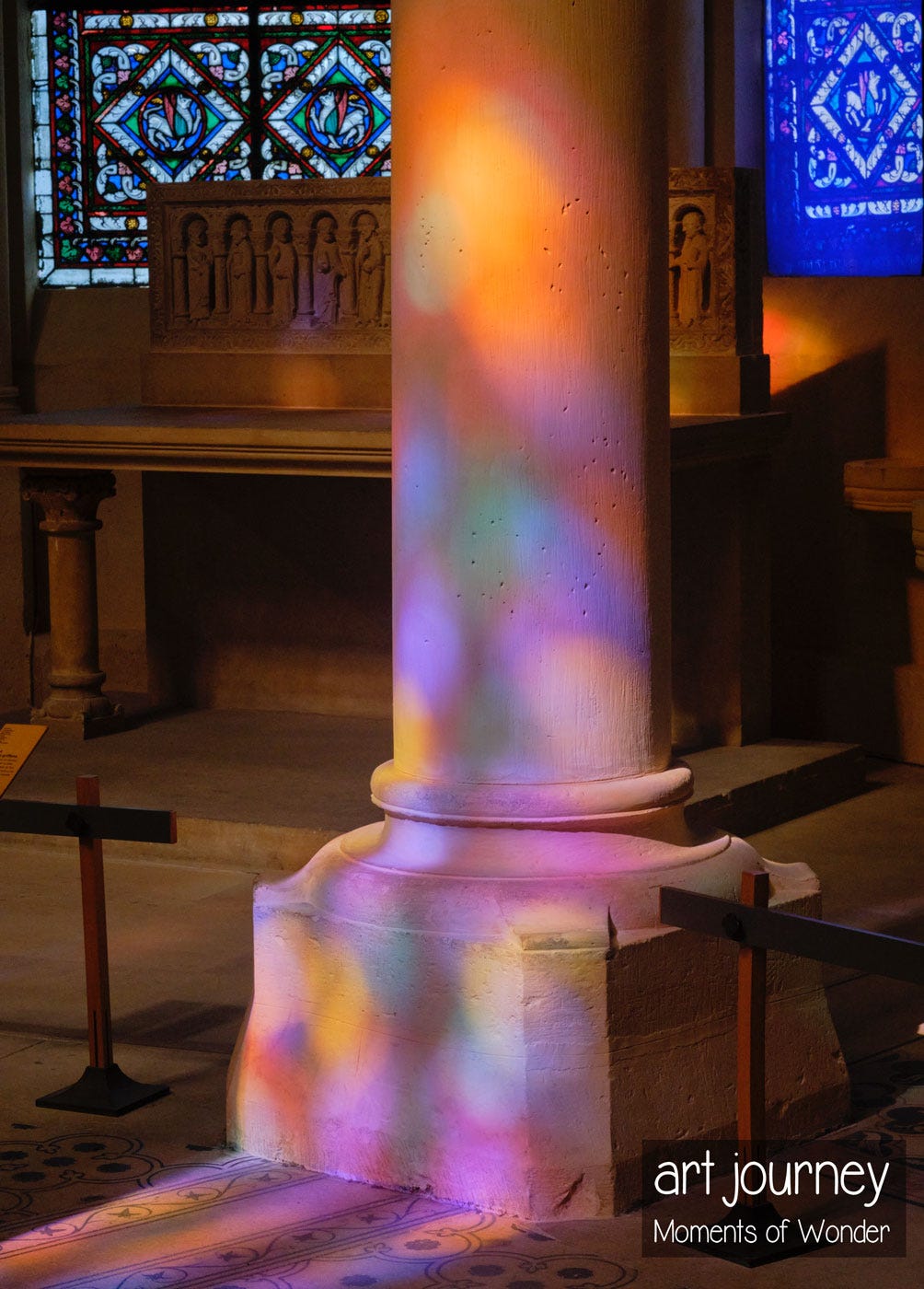Birth of 'Gothic', the Architecture of Light
Discover how Saint-Denis Basilica is a jewel of architecture that influenced the world.

We already discussed Saint-Denis, the Saint, and the Kings of France buried at Saint-Denis Basilica.
Here, we will illustrate how Saint-Denis is a milestone that influenced the world, by being the birthplace of so-called Gothic architecture.
Dear reader, to put it simply, the wonder of Saint-Denis Basilica is all about light.
You already know that precious medieval Bibles and prayer books were illuminated. The word means bringing light, and scribes and painters illuminated pages by adding colors and gold to Scripture.
That idea of illumination is more profound. In the Bible, Jesus said
I am the light of the world. Whoever follows me will never walk in darkness, but will have the light of life.
Before discussing how the architecture of Saint-Denis Basilica is about illumination, we need a little historical refresher on the meaning of the word Gothic.
The Gothic myth
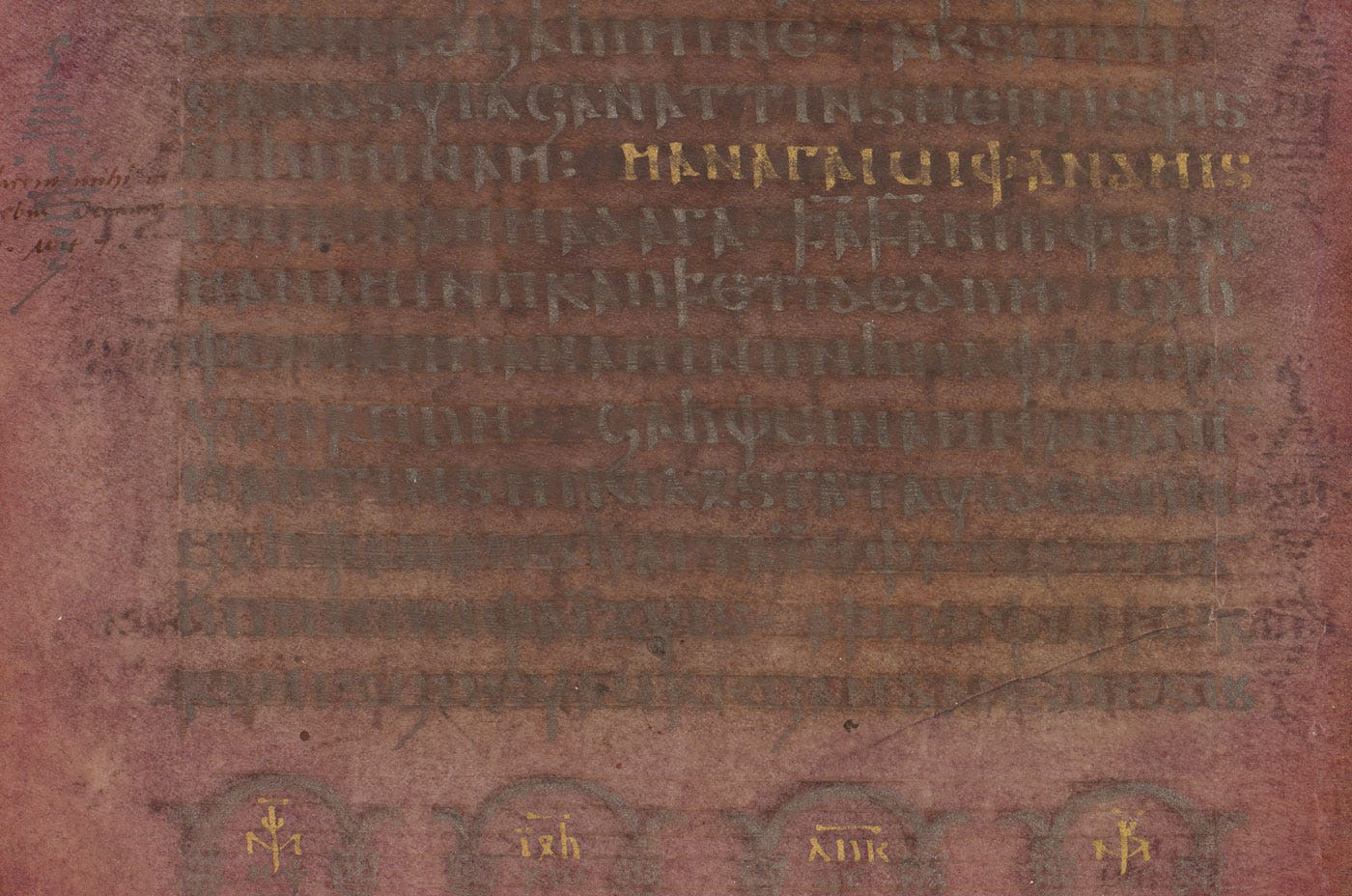
The sack of Rome in 410 by the Goths of Alaric is widely perceived as the moment when the Roman world started to collapse. This barbarian sack brought the Dark Ages, the tragic loss of books and knowledge, leading to a Middle Age before civilization's rebirth during the Renaissance.
Let's see the testimony of Saint Augustine:
Contrary to the custom of war, these bloodthirsty barbarians spared them, and spared them for Christ's sake, whether this mercy was actually shown in promiscuous places, or in those places specially dedicated to Christ's name, and of which the very largest were selected as sanctuaries.
This refers to the fact that the Goths spared Saint Peter and Saint Paul basilicas. A later testimony adds:
When they finally entered Rome, by Alaric’s express command they merely sacked it and did not set the city on fire, as wild peoples usually do, nor did they permit serious damage to be done to the holy places.
The Goths were Christians who used Bibles translated into the Gothic language by Bishop Wulfila. They were Arians, a branch of early Christianity that saw God and Jesus as separate. The Church of Rome deemed them heretics.
Important note: This certainly does not attempt to diminish the destruction caused by the Goths, only to establish the historical facts.
The Renaissance used Gothic as an insult while burning books
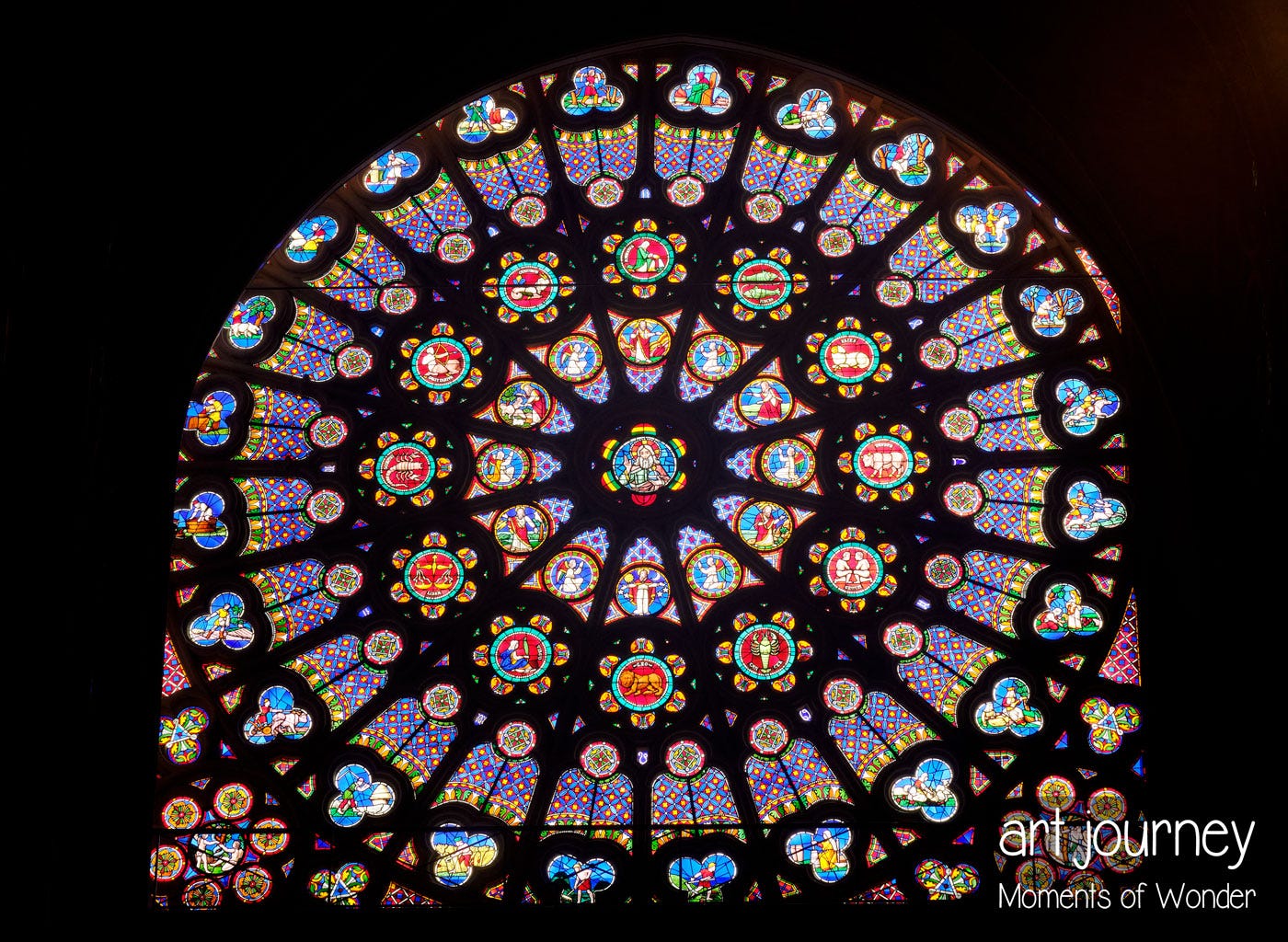
Renaissance intellectuals dismissed Middle Ages architecture as a "monstrous and barbarous" German style. They said it was an "invention of the Goths, for, after they had ruined the ancient buildings and killed the architects in the wars."
In other words, Gothic is meant as the people responsible for the Dark Ages. If that was not clear enough, the Goths and Vandals were responsible for:
Beauty burnt and destroyed by the evil wrath and ruthless violence of wicked men, beasts indeed.
As to book burning, these intellectuals needed not to look at the past. The age of the printing machine was also the age of book burning. Here is the edict published in response to Martin Luther:
For this reason we want all of Luther's books to be universally prohibited and forbidden, and we also want them to be burned.
We execute the sentence of the Holy Apostolic See, and we follow the very praiseworthy ordinance and custom of the good Christians of old who had the books of heretics like the Arians, Priscillians, Nestorians, Eutychians, and others burned and annihilated, even everything that was contained in these books, whether good or bad.
The hypocrisy is that the very same Charles V who promulgated this edict—mentioning the Arians, the Christian school to which the Goths belonged— is responsible for the sack of Rome in 1527.
That was context to help you, dear reader, understand that history is more complicated than shown on TV. Let's now make sense of the so-called Gothic style, which is not about an age of darkness but its opposite, light.
Brighten the minds so that they travel through the lights to the true light
We have not yet entered the basilica, but pay attention to the inscription on the door. Suger, the Abbott of Saint-Denis, is responsible for enlarging the upper Choir, where the so-called Gothic style was invented.
On the door, Suger states:
All you who seek to honor these doors,
Marvel not at the gold and expense
But at the craftsmanship of the work.
The noble work is bright, but, being nobly bright,
The work should brighten the minds,
Allowing them to travel through the lights
To the true light, where Christ is the true door.
The golden door defines how it is imminent in these things.
The dull mind rises to the truth through material things,
And is resurrected from its former submersion when the light is seen.
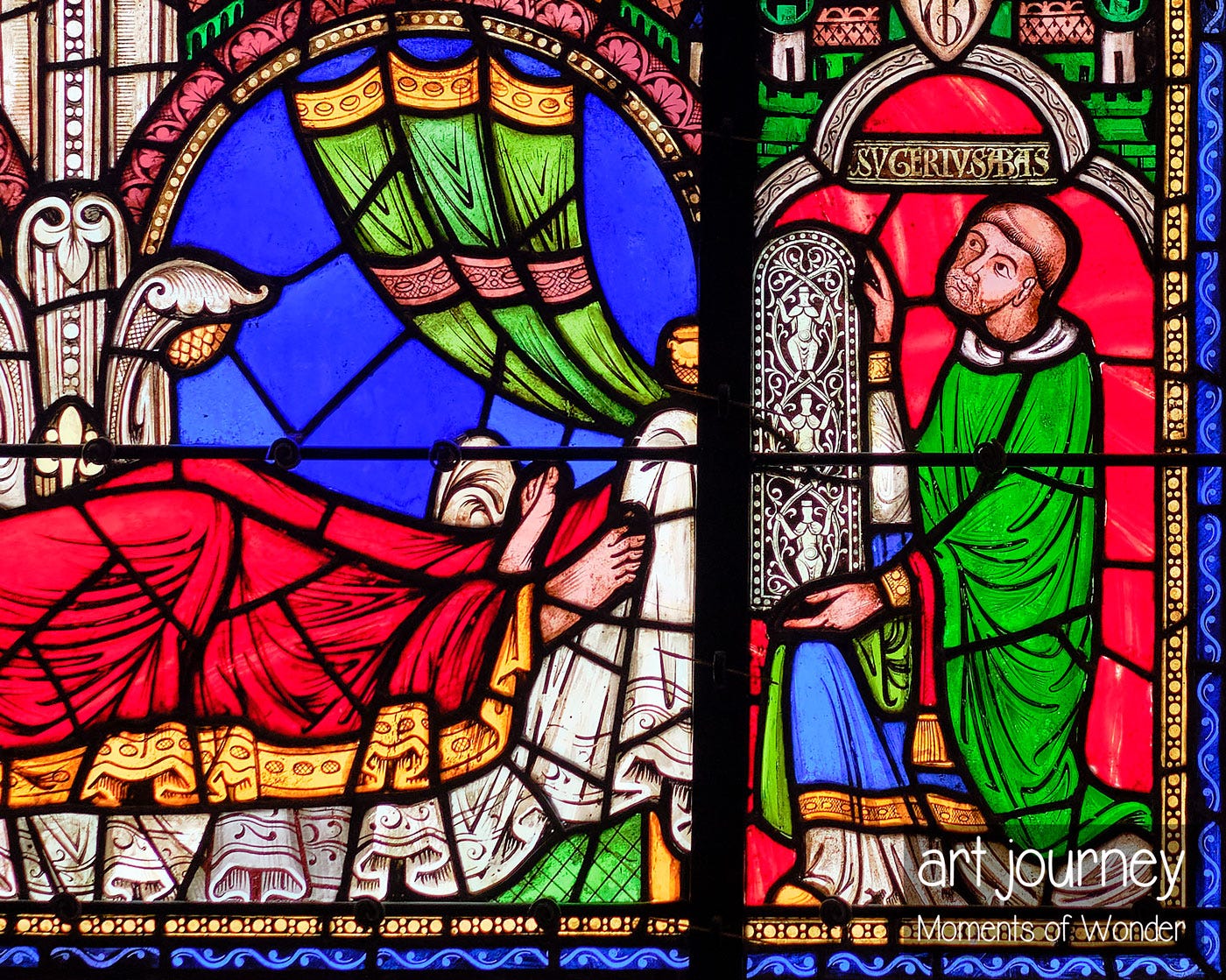
Suger and the Architecture of Light

Suger, an intellectual, argues that the dull mind rises to the truth through material things; by that, he means gold and gemstones.
Plain English translation: Most worshipers do not know how to read, do not understand Latin, and, anyway, have a 'dull mind'’ The peasant, the average person, does not have the education to understand Christ's message, "I am the light of the world."
To elevate simple minds to higher realms, Suger uses the multiplication of light in a gemstone, the shine of precious metal, and the wonder of sunlight becoming the divine word while passing through stained-glass windows.
The stained-glass window kaleidoscope of color has a deeper meaning: it previews Heavenly Jerusalem.
The foundations of the wall of the city were adorned with all kinds of precious stones: the first foundation was jasper, the second sapphire, the third chalcedony...
It is unlikely Suger knew that, but the process for creating color in gemstones and glass is identical: the gems and glass are colorless.

When white sunlight enters a colorless material that has metal impurities, the metal captures some of the rainbow colors composing sunlight. What comes out is one color.
The birth of blue as the color of the Virgin Mary and France

One must remember that paintings mostly used a red, white, and black palette, and gold was used for the skies. Blue was almost non-existent.
You may have heard of the famous Chartres Blue. It was actually born in Saint-Denis, where it was discovered that cobalt could make glass light blue.
The Virgin Mary ascended the sky, and Suger wanted to express religious ideas using color and light. Cobalt, the metal that causes the light shade of blue, was also astonishingly expensive.
This is why, in 1140, at Saint-Denis, blue became the color of the Virgin Mary, the French Kings, and France itself.
Romanesque vs 'Gothic' architecture
To further explain the meaning of 'Gothic,' the previous style of architecture used heavy vaults that had to be carried by thick walls. As a result, the windows were small.
Small windows meant darkness, precisely Suger's complaint. He explained that on the rare days his abbey opens to pilgrims, they get crushed and cannot properly see the relics.
So, Suger and his unnamed architect sought to fight darkness and open the building to the light, like an immense reliquary, as if the abbey was made of gold, gems, and color.
The new style aims to enlighten the church and reveal divine light through glass windows.
Opus Francigenum, 'French Work' copied from Saint-Denis Basilica to America
The new style, born in 1140 at Saint-Denis, had no particular name aside from the fact that it was new. In about 1280, a monk in Germany described it as Opus Francigenum, meaning French Work.
It illustrates that the new architecture invented at Saint-Denis Basilica spread all over Europe, from England to Germany and Italy to Spain.
Opus Francigenum, like the Italian Renaissance—which tarred it as being made by Goths—is still an influential artistic movement.
Admire the sights of Manhattan, Washington DC, or San Francisco, and you will see copies of Opus Francigenum architecture.
Furthermore, have you ever wondered why small wooden churches have, with absolutely no structural need, pointed windows? They do so to imitate the majesty of Opus Francigenum cathedrals.
Dear reader, ask yourself: are thousands of churches and cathedrals across Europe, the Americas, Asia, and Australia barbarian monuments?
The facts: no Goth, barbarian, or otherwise, has ever put his dirty, bloodied hands on the cathedrals built in the 1100s and afterward.
When Suger and his unnamed architect discussed how they could let divine light enter their basilica, the Gothic barbarian nation was already in history's dustbin.
Gothic is an insult that means monstrous architecture created by barbarians responsible for the Dark Ages. Why repeat the slander?
Looking at the pictures illustrating this story, would you not agree, dear reader, that it is absurd to call architecture that magnifies sunlight as being about darkness? We should call that style Medieval Architecture of Light instead.
Enter Saint-Denis Basilica or any church that copies the Medieval Architecture of Light style invented there.
Wait for the clouds to open. When the sunlight passes through the stained-glass windows and becomes color, you will have a Moment of Wonder.
Sources
Saint Augustine, The City of God, Chapter 1.— Of the Adversaries of the Name of Christ, Whom the Barbarians for Christ's Sake Spared When They Stormed the City.
Jordanes, De origine actibusque Getarum.
Giorgio Vasari, Lives of the Most Excellent Painters, Sculptors, and Architects.
Raphael and Baldassare Castiglione, Letter to Pope Leo X.
The Edict of Worms (1521).






